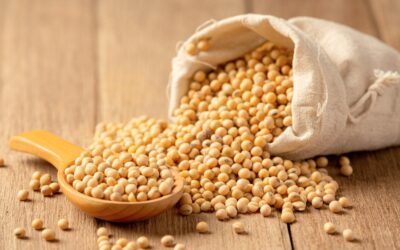The technical process of fertilizing potato plants.
To achieve high yield and good quality potatoes, and to limit diseases such as plant wilt or some root rot diseases in potato plants (which chemical pesticides cannot prevent), it is recommended to use VN3 organic microbial fertilizer as a base fertilizer for crops. VN3 organic microbial fertilizer, in addition to containing multi-nutrient, medium, and trace elements formed after the decomposition of pig and cow manure into humus, also contains beneficial microorganisms that promote the growth and development of crops and limit the growth of pathogenic microorganisms in the root zone.
Instructions for using VN3 organic microbial fertilizer from Công ty CPSX và TM Suối Hai: Apply to potato growing areas in Hai Phong and neighboring regions. Using VN3 organic microbial fertilizer can save on the use of conventional nitrogen, phosphorus, and potassium mineral fertilizers, improve productivity, and enhance the quality of potatoes in an organic direction, preventing wilt diseases in potato plants.
- Dosage: Depending on the potato variety and soil type, the recommended amount of mineral fertilizer for planting potatoes using the minimum tillage method for one northern acre (360 m2) is as follows:
| Type of fertilizer | Total amount of fertilizer | Top dressing (%) | ||
|---|---|---|---|---|
| Kg/acre | Base dressing (%) | 1st application | 2nd application | |
| VN3 organic microbial fertilizer | 110 | 100 | – | – |
| Urea nitrogen | 6-10 | 20 | 40 | 40 |
| Superphosphate | 15-20 | 100 | – | – |
| Potassium chloride | 10-12 | 30 | 35 | 35 |
- Fertilization method:
- Base dress the holes with the entire amount of VN3 organic microbial fertilizer, phosphate, and potassium fertilizer, as well as urea, according to the dosage listed in the table.
- For base dressing, apply VN3, urea, and phosphate fertilizers at the bottom of the hole, then cover with a thin layer of soil. Place the seed tubers at the prescribed distance, lay the sprouts horizontally, cover the tubers with a soil layer 3-5 cm thick, and then form ridges. If the soil is dry, water should be applied before fertilizing to promote rapid plant growth. Potato seed tubers can be planted as soon as they start to sprout slightly; there is no need to wait for the sprouts to grow long. When placing the tubers, avoid direct contact with the fertilizer, especially chemical fertilizers, as this can cause the tubers to die.
- Apply the remaining nitrogen and potassium fertilizers in two stages:
+ 1st application: 20-30 days after planting
+ 2nd application: 15-20 days after the first application.
The fertilizers can be dissolved in water for irrigation or applied directly beneath the straw mulch, followed by watering.
- Some notes:
- Store the VN3 organic microbial fertilizer at room temperature, in a dry and cool place, away from direct sunlight or locations with temperatures >40°C. The storage period is within 6 months from the date of manufacture.
- Do not mix VN3 organic microbial fertilizer with plant protection chemicals and individual chemical fertilizers when applying to crops.
- Pest and disease control: Effective integrated pest management requires thorough application of measures such as planting disease-resistant varieties, crop rotation with different families, cleaning up crop residues after harvest; balanced and timely fertilization, weed control, soil loosening, crust breaking, drainage maintenance to avoid waterlogging after rain or irrigation to reduce soil moisture, and treating seeds with fungicides before sowing; applying biological products and organic fertilizers containing antagonistic microorganisms to prevent soil-borne diseases.
- Common pests: Wax scale, greyworm, greenworm.
- Greyworm: Treat the soil before planting, handpick, or use 50% Malathion mixed at a concentration of 0.1% and spray between 4-6 pm.
- Wax scale: Treat the seed tubers before storage. Disinfect the trellis by sunning, soaking in water, and spraying with pesticides.
- Greenworm: When the plant is large and the pest density exceeds the threshold, use pesticides such as Sherpa 20 EC, Trebon 10 EC. Stop chemical spraying 15-20 days before harvest.
- Some common diseases difficult to control with chemical pesticides:
- Bacterial wilt disease caused by the bacterium Ralstonia solanacearum. This is a common, dangerous disease that is widespread around the world, especially in tropical and subtropical regions. Bacterial wilt is considered one of the five most concerning plant diseases by the FAO’s Integrated Pest Management program (1992) and is under strict control by international quarantine, especially in the European and American communities.
- Wilt disease caused by the fungus Rhizoctonia sometimes also encounters diseases caused by the fungi Fusarium solanni, F.oxysporium, which damage the base of the stem, causing the plant to wilt and the leaves to turn yellow (known as yellow wilt disease).
Most of the pathogenic microorganisms mentioned above have their disease sources existing in the soil on crop residues and in organic waste. Diseases arise and develop under conditions of relatively high temperature, humidity, and poor plant growth. On monoculture sandy soils, diseases tend to be more severe. Specifically, black mold and white mold wilting diseases also thrive in soils rich in organic matter, residues, and undecomposed plants. Diseases appear throughout the plant’s growth process, but the severity of the disease varies at each growth stage, and different types of wilting diseases cause varying degrees of damage.



